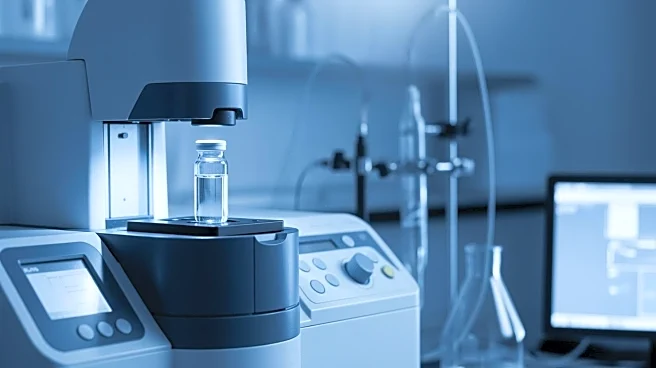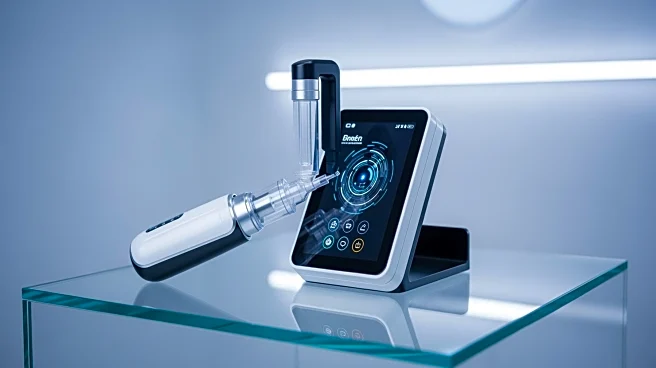What's Happening?
Researchers have developed a new spectroscopic method using erythrosine-based resonance Rayleigh scattering (RRS) to quantify cyclopentolate in ophthalmic formulations. This method leverages the formation
of a 1:1 ion-associate complex between erythrosine and cyclopentolate, enhancing RRS signals and allowing for precise quantification. The approach is noted for its simplicity, requiring no hazardous solvents or elevated temperatures, and aligns with green chemistry principles. The method has been validated for accuracy, precision, and robustness, offering a reliable tool for pharmaceutical analysis.
Why It's Important?
This advancement in spectroscopic analysis could significantly improve the quality control of ophthalmic drugs, ensuring accurate dosing and safety for patients. The method's alignment with green chemistry principles also reflects a growing trend towards environmentally sustainable practices in pharmaceutical research. By reducing the need for hazardous chemicals and complex procedures, this approach could lower costs and increase efficiency in drug manufacturing and testing.
Beyond the Headlines
The development of this method highlights the potential for innovative analytical techniques to transform pharmaceutical quality control. As regulatory bodies increasingly emphasize sustainability, methods like this could become standard practice, influencing how drugs are developed and tested. The focus on green chemistry also underscores a broader shift in the industry towards reducing environmental impact.











